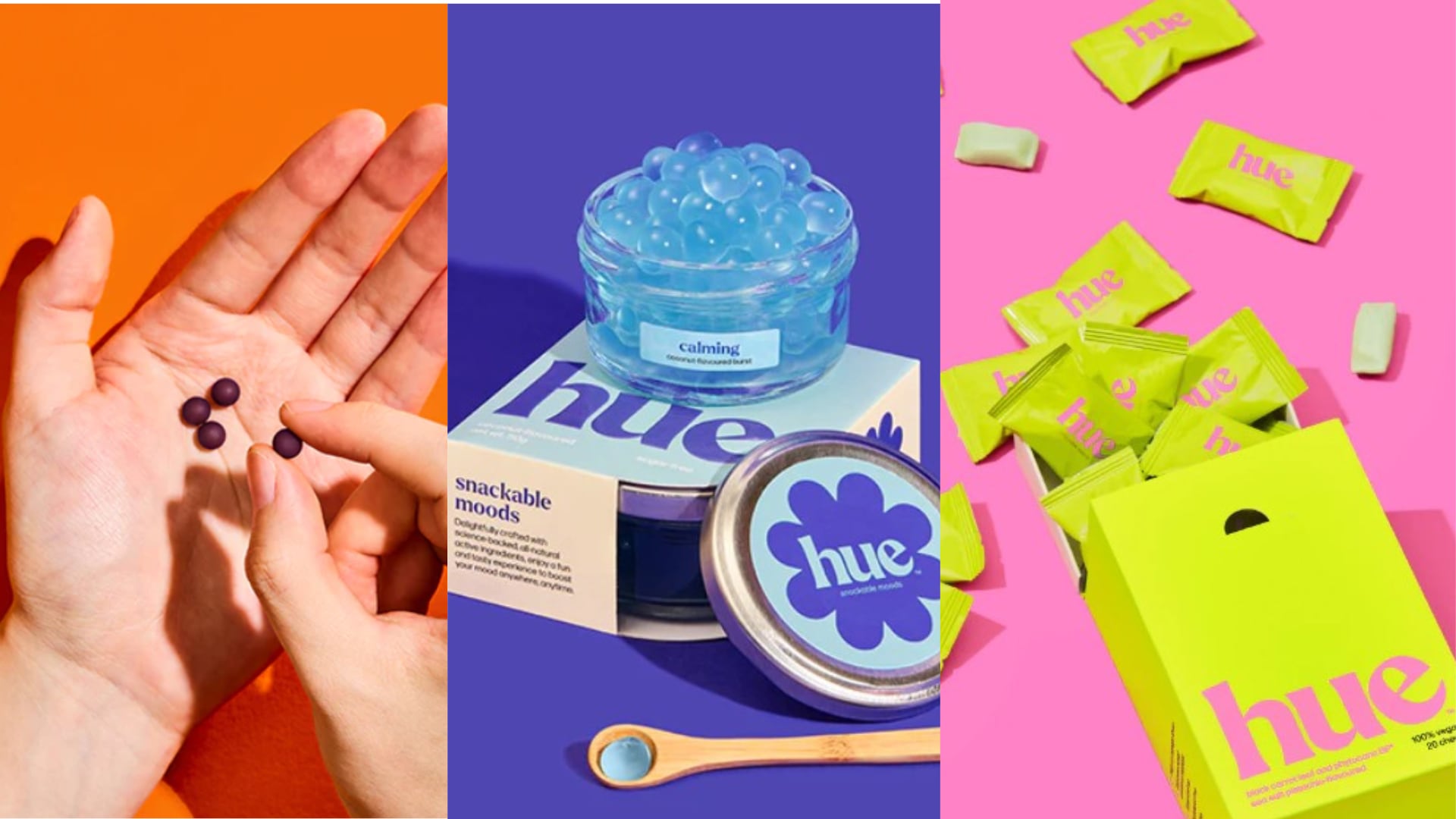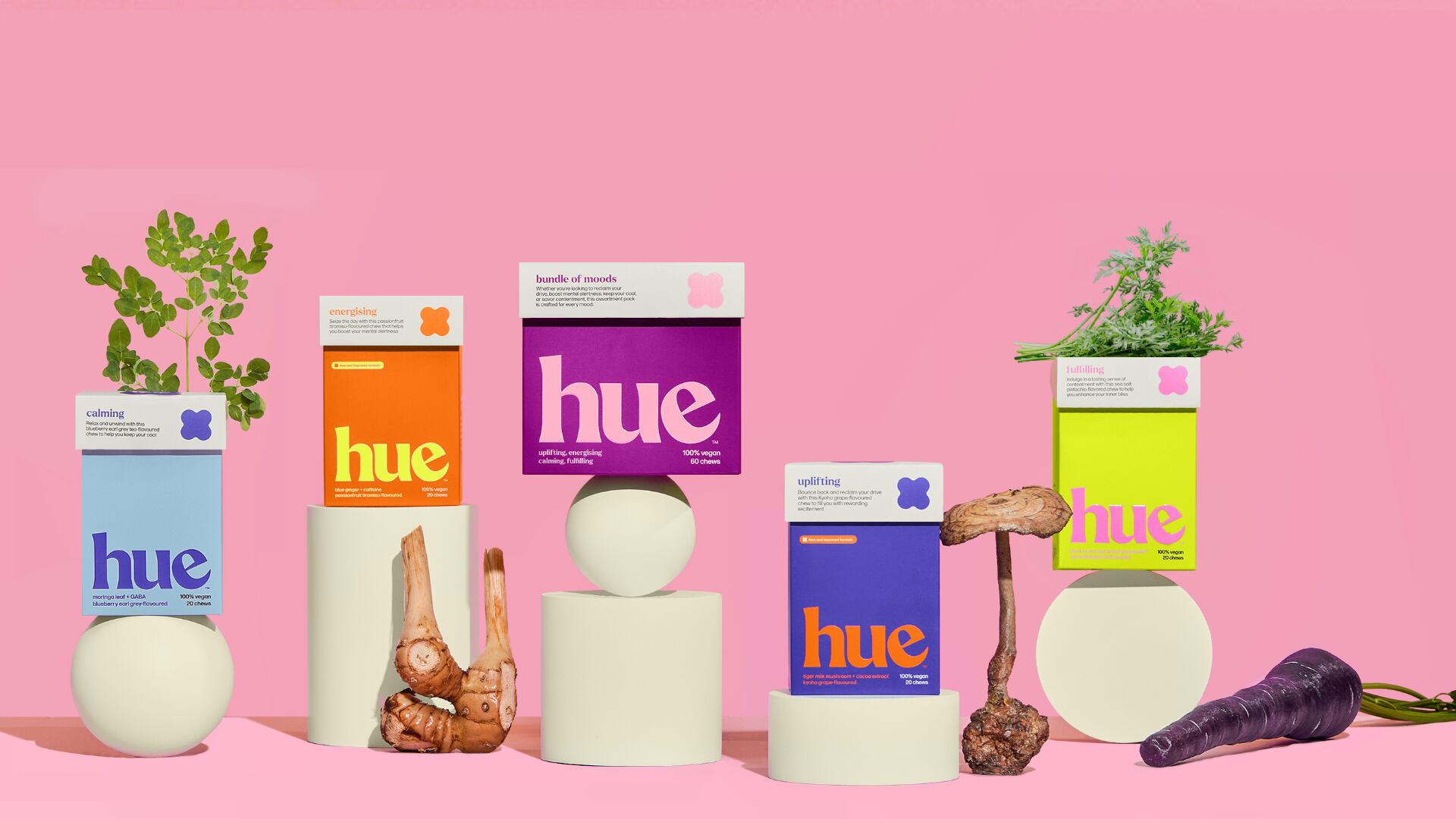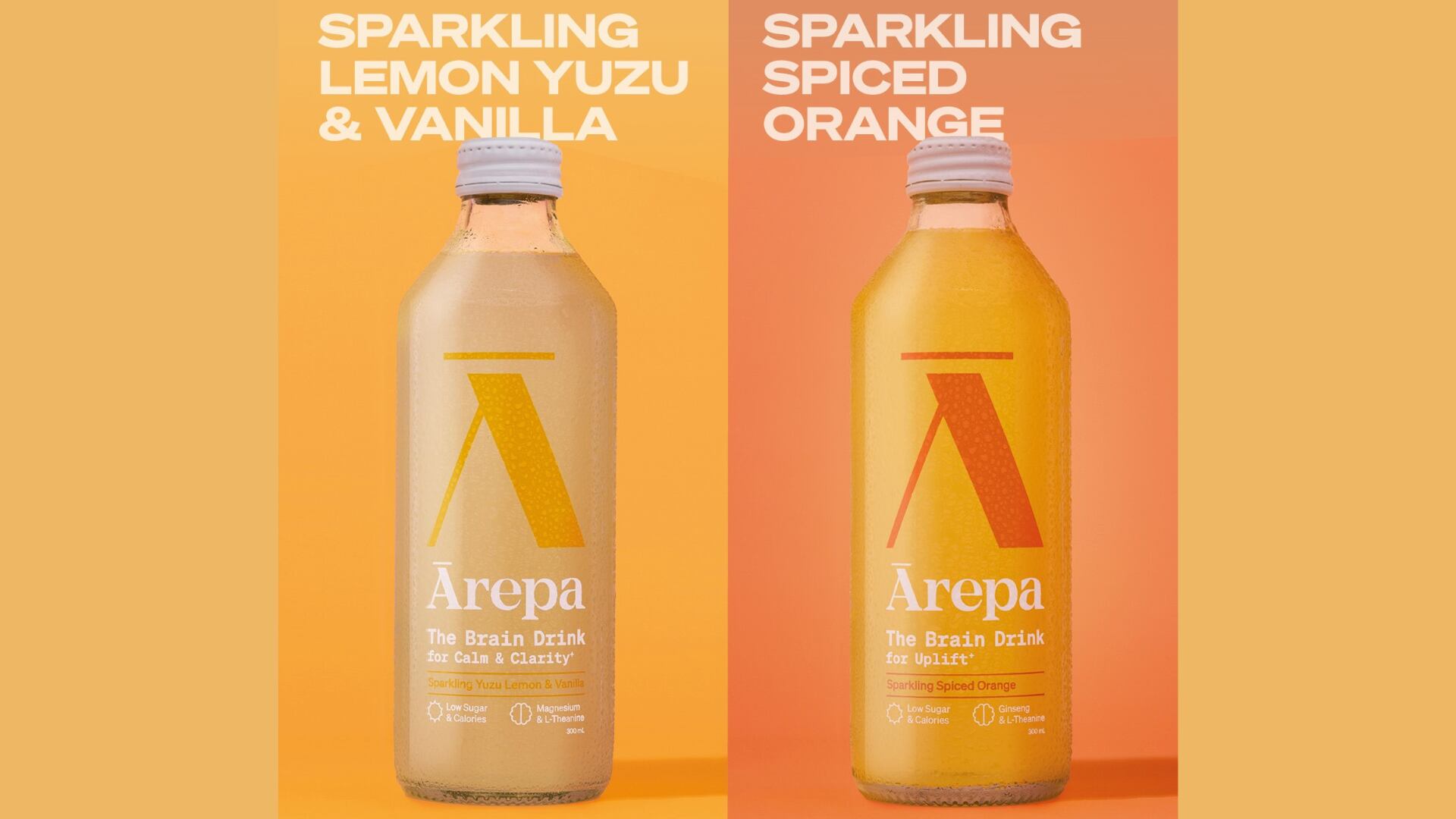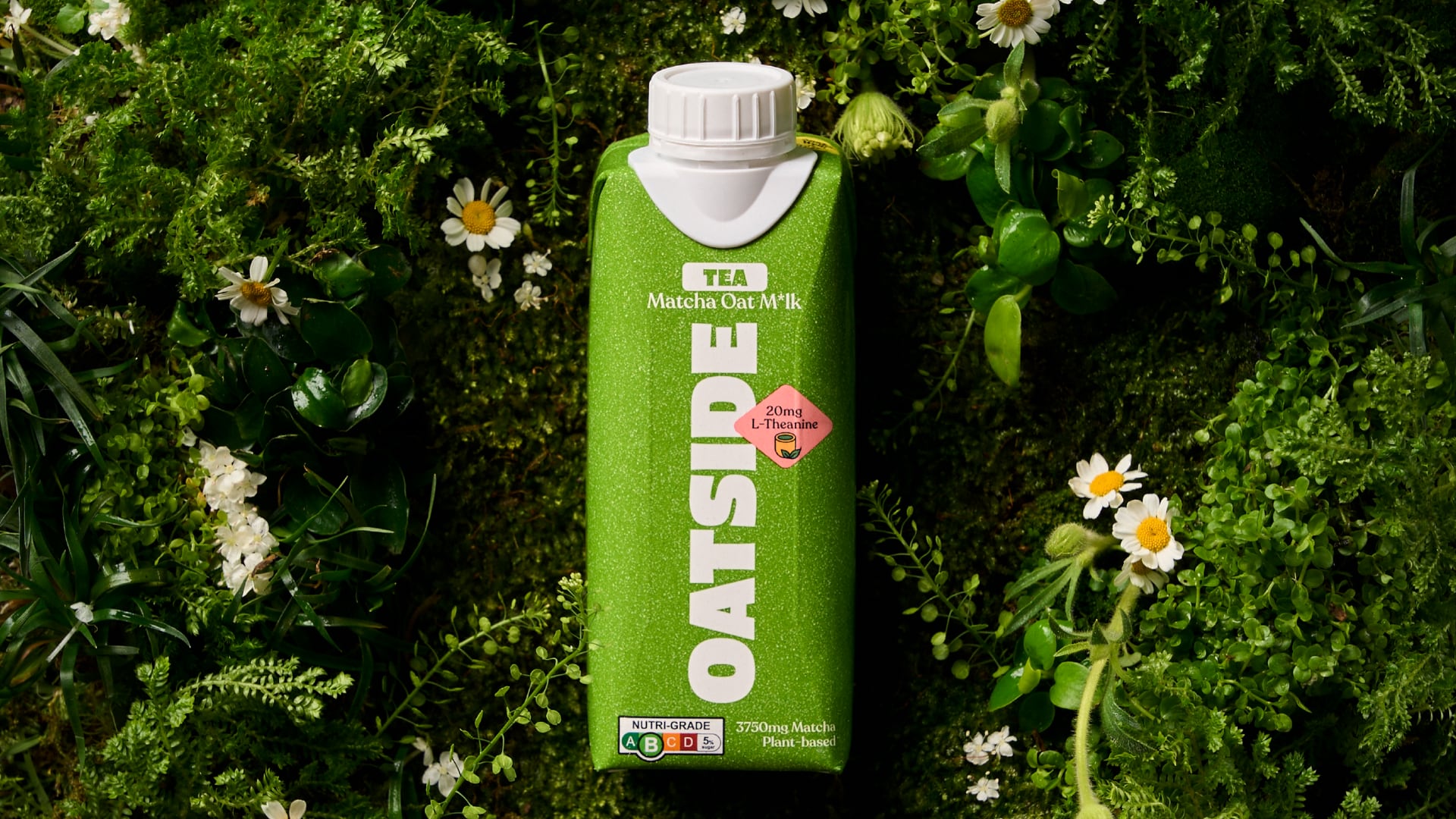Mental health issues affected over 80 million people across ASEAN in 2021 – a 70% increase since 1990. This surge has made mood and emotional wellness a growing focus for functional food innovation.
In response, Singapore start-up Hue has developed mood-boosting candies formulated with ingredients such as tiger milk mushrooms, fish oil, gac fruit, and moringa leaf. The aim is to support relaxation and emotional balance.
Hue’s business development manager, Delia Tham, said the team saw a clear gap for emotional wellness in daily life
“Everyone has mood and energy swings almost every day of their lives, yet most wellness products focus mainly on physical health. We saw a gap whereby mood wellness is not addressed by everyday food formats or through everyday rituals,” said Tham.
“So we set out to identify and research botanicals with proven results and present them in formats that are sensorially indulgent, designed to calm, bring a sense of fulfilment, energise or uplift your day.”
Addressing mental health
Mental wellness is gaining attention across Asia, with the World Health Organization (WHO) calling for a strategic framework to transform mental health in South East Asia in a 2024 report.
This follows findings that the prevalence of mental disorders is increasing in recent years.
“Overall, mental disorders ranked among the top ten causes of disease burden in all ASEAN countries except Myanmar, accounting for a fifth to a quarter of disease burden in children, adolescents, and young adults in several ASEAN countries, including Malaysia, Brunei, and Singapore,” wrote researchers in The Lancet Public Health.
Chew, pop, or burst
The Hue team designs its formats and flavours around everyday enjoyment rather than clinical routines. The aim is to make mood wellness feel like an uplifting treat, not another supplement to endure.
“Mood wellness should be something you look forward to, like a small treat that momentarily takes you away from whatever is occupying your head,” shared Tham.
“That’s why we gravitate towards playful textures – a chew that oozes yummy goodness in between long emails, or an invigorating pop you can enjoy on a walk or even in a meeting. They’re meant to feel like tiny rewards, not chores.”
Flavour is equally important, as they evoke emotions and affect taste appeal.
Tham explained that taste sets the emotional stage.
Fruity and refreshing flavours give an instant lift, while nostalgic notes can spark comforting thoughts – such as bringing back childhood memories.
“Texture and taste aren’t finishing touches – they’re part of the mood experience we’re building,” said Tham.
“If it doesn’t taste good, no one will come back for a second try, no matter how strong the science is.”
Nonetheless, Tham pointed out the “wellness-focused generation” not only want solutions that fit into their daily life, but value efficacy too.
“They’re bold about discussing mood, prefer science-backed options, and value products that are both effective and enjoyable,” said Tham.
Science-backed traditional wellness
Hue partners laboratories and research institutes worldwide to study traditional botanicals that influence mood. Focusing on ingredients long used in Southeast Asian medicine, the team investigates their efficacy in improving wellbeing.
The firm holds a published patent for its use of tiger milk mushrooms in formulations supporting mental wellbeing with World Intellectual Property Organization (WIPO).
Dosages for each candy fall within research-supported ranges and are cross-referenced with traditional usage to ensure safety and functionality.
Botanicals showing mood-enhancing effects include tiger milk mushroom, which helps raise dopamine levels, and moringa leaf, which promotes relaxation through its influence on GABA receptors – key pathways involved in calming the nervous system.

Hue’s current range includes a variety of chews, pops, and bursts that includes Asian botanicals such as gac fruit (said to promote longevity, vitality and health), blue ginger (known to boost metabolism and focus), and screwpine or pandan (believed to relieve stress and anxiety).
The firm plans to launch more flavours and textures while expanding its footprint across Asia.
What are GABA receptors?
GABA receptors are proteins in the brain that help calm the nervous system. They respond to a natural chemical called GABA (gamma-aminobutyric acid), which slows down nerve activity and reduces feelings of stress or anxiety. When these receptors are activated, they help the body relax and maintain emotional balance.
New creations and growth plans
Hue will be updating its Burst candies with bobas – chewy pearls usually made from tapioca that are added to bubble teas.
“Instead of bobas in tea, we put the tea into the boba. Flavours like peach green tea boba and osmanthus oolong boba can be consumed directly without needing to add them into bubble tea,” shared Tham.
The firm will also launch baked seaweed snacks with nuts in wasabi mayo and roasted corn flavours.
“We aim to make mood care as natural as brushing your teeth or having morning coffee – only more fun and tasty,” Tham added.
“We’re expanding into new Asian markets and growing our retail reach in Singapore and overseas, and we’re open to partnering with others who want to bring something new and playful to their markets.”
She added that Hue has partnered with manufacturers in Taiwan and Japan to ensure both quality and credibility.
“These are markets where functional food and nutraceuticals are already well-established, with consumers who trust the category and regulators that provide clear frameworks. That helps us move faster and with confidence,” Tham said.
“Second, it’s about quality and credibility. Japanese and Taiwanese manufacturing standards are world-class, and that reinforces the safety assurance and consumer trust we need when introducing something new like mood wellness.”





